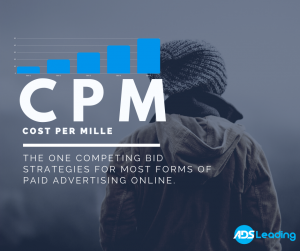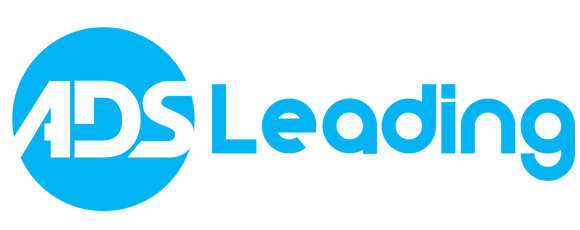When you make an ad, you can select from several ways to determine prices. Today you are going to learn about the three most common ways and you will discover which one best suits your company’s needs.
Cost Per Click (CPC), Cost Per Thousand Impressions (CPM), and Cost Per Action (CPA) are methods used by digital media platforms. The CPA is calculated by the number of conversions, the CPC is calculated by the number of clicks on the ads and the CPM by the impressions.
When you decide to advertise on the internet, you must make several decisions to monetize traffic. And just as digital advertisements manage to be analyzed in a way that was impossible in traditional media, it is also feasible to determine their prices in different ways. To create an ad, you need to select what form of price metric applies to your reality. In this article, we will talk about the three best known in the world of digital marketing: CPA, CPM and CPC.
CPM
CPM (Cost Per Thousand Impressions) is a metric that represents the cost generated per thousand ad impressions. Obviously, they are not literal impressions, but are the number of times that certain ad was shown to the public on the Internet.
By choosing CPM as the payment method, the advertiser agrees to pay the publisher a predetermined amount for every thousand impressions. This means that the Publisher receives compensation for each advertisement displayed. However, to view per thousand people, the advertiser site needs to have a lot of traffic, so well-known news portals or blogs that handle a lot of traffic use this type of campaign price metric more.
CPM is used in branding campaigns, for example, in those campaigns that aim to increase brand awareness of a product or company. It is also a strategy used by medium and large companies, with a well-structured marketing sector and a clear strategy.
To help you understand better, let’s look at this example, assuming that an advertiser is going to run a campaign on Facebook Ads or Google AdWords under the following terms:
- 10,000 ad impressions in half rectangle format, with dimensions 300 x 250, with a CPM of $5
- 10,000 ad impressions in header format, with dimensions 728 x 90, with a CPM of $7
In this example, what is the total cost of those ads? To calculate the cost per thousand impressions or the total cost, the following formula should be used:

The total cost of item A is $ 50:
5 = Cost / (10,000 / 1,000)
Cost = 5 x 10
Cost = $50
In this way, the advertiser would spend $120 on ads: $5 for every thousand impressions of the middle rectangle (totaling $ 50) and $7 for one thousand impressions of the header (totaling $70).
One of the advantages of using CPM to advertise is that you earn money for each ad viewed, apart from generating clicks, leads or other actions. Every visitor to the site helps the publisher earn money. If you opt for CPM, keep in mind the time that your ad will take to reach a thousand views, the faster this happens, the more resources will be necessary for your campaign to continue to be on display. For this, CPM is commonly used when you have more confidence that the impacted audience will be the correct audience.
How to optimize your CPM:
In the end, what we all want is to obtain a greater benefit for the lowest possible cost. Here we leave you some tips to achieve it:
- Choose the right people: when the ads you promote are liked by your target audience, your relevance level growths.
- Check the frequency: you must watch how many times the same person watches your ad. This compromises your investment and the scope of your efforts.
- Use an image or video that is striking: a different graphic element that attracts attention is important to get the attention of your target audience.
- Include a call to action: one of the best ways to keep people interested is to invite them to interact with your ad. Use a text that promotes participation with your ad.
CPC
CPC (Cost Per Click), is a payment method for paid ads in which payments are made according to the number of clicks made. This means, the advertiser pays for the visitors who access the site where the announcement was made for their site.
CPC is a useful metric to know the precise results of your ad. It is appropriate for those who want to get more traffic to the website or blog. Because the budget is spent based on the number of clicks an ad receives, this kind of pricing metric is more indicated and easier to control, even for learners. The CPC helps you to notice the interest of the public.
You must use the following formula to calculate the CPC:

How to optimize your CPC
We recommend the following tips whenever you are looking to improve your CPC:
1. Lower offers: Reducing your offers is the most basic way to reduce the average CPC of your campaign.
2. Research and find additional keyword variations: Let’s assume you’re running a new campaign for a travel agency, but you’re facing stiff competition, and because it’s a small business, you can’t afford a big budget. Here you can definitely benefit from researching additional keywords or long tail Keywords. A good tool to help you in this search for alternative and lower cost keywords is Ubersuggest.
3. Use different types of matches: depending on the structure of your campaign and the segment in which you are competing, there may be a slight to significant average CPC variation for the same keywords in different types of matches. You can configure your campaign with different ad groups to test the same keywords in different match types, or you could even create separate campaigns to test the success level of a particular keyword.
4. Change the ads to make them more relevant: the relevance of your campaign ad is part of the technique used to determine the quality level of your keywords. A good way to improve the relevance of your ad is to use keywords from the ad group in the title and description, to ensure that your landing page will be as relevant as possible to the keyword.
5. Try using different Landing Pages: If we assume that you are already creating good and highly relevant ads and managed to rank them above average, it is still possible to improve the relevance of your ad. This is accomplished by improving the user experience on the Landing Page. You should evaluate your landing page, see if it works correctly and if you can put progressive profile to facilitate the conversion and do everything in your power to make users feel comfortable and satisfied. By changing your ads to a better landing page, you will be able to increase the relevance and therefore improve the quality level of the keywords in the ad group, thus reducing the average CPC.
6. Create thematic ad groups: Building thematic keyword lists and ad groups is usually one of the best practices for setting up a campaign and achieving a good level of quality.
CPA
CPA (Cost Per Action), among all the other metrics that we have today, this is the most expensive, because the company pays when the customer achieves the final objective of your campaign: a sale, the download of free content, among others. It’s an affiliation in which the publisher of the ad wins when the action desired by the advertiser is carried out by the visitors. This is a format indicated mainly for those who already have wide margin profits on their products, since the value of the ads may be higher, because the publisher receives when the desired action is completed.
Using this formula below, you can calculate the CPA:

Suppose that you offer courses online and that you have had an expense of $ 1500 with ads, obtaining 50 matriculations. What is the cost per acquisition?
CPA = 1500/50
CPA = 30
How to optimize your CPA
In general, the higher your quality level, the lower your costs will be; in fact, if your score is above the average quality level of 5, your CPA will drop by approximately 16%. To achieve this, you must follow the optimization tips of the previous metrics, since these points generally improve your quality level and, therefore, keep your CPA low.
Carefully monitoring these three metrics will pay off for your paid ad budget over time, giving you the opportunity to buy more exposure and optimize the number of conversions that come from your advertising investment.
We hope this information allows you to efficiently use your resources and achieve more sales.
We wish you good results!

